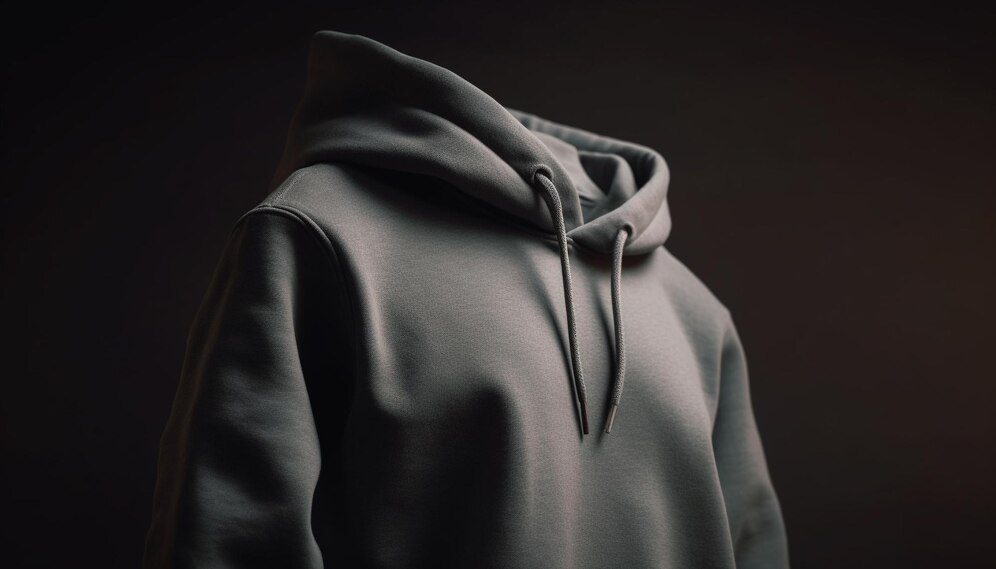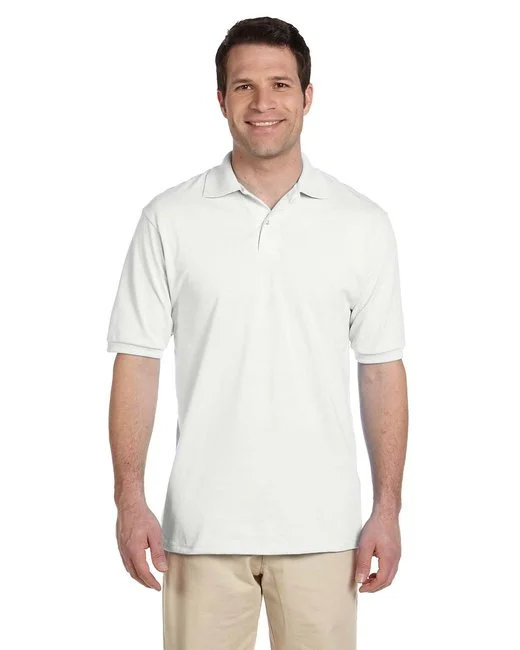Should I wear a sweatshirt to run?


Running is one of the simplest and most accessible forms of exercise, requiring minimal equipment beyond a good pair of shoes. However, when it comes to clothing, the decision can become more complicated, especially regarding layering.
One of the most frequently asked questions is, “Should I wear a sweatshirt to run?” The answer depends on various factors, including weather conditions, personal preference, and performance goals. In this article, we will explore the pros and cons of wearing a sweatshirt while running, as well as provide recommendations for when and how to wear one during your workout.
The benefits of wearing a sweatshirt while running
Wearing a sweatshirt during a run can provide several advantages depending on the environment and individual needs.
1. Retaining body heat
Sweatshirts are ideal for colder weather because they help trap heat close to your body. This can be especially useful during the warm-up phase of your run when your muscles are still cold. By keeping your core temperature elevated, you’ll reduce the risk of injury and help your body transition more easily into strenuous activity.
2. Sweat absorption
As their name implies, sweatshirts are designed to absorb moisture. They can help wick sweat away from your body during a run, keeping you more comfortable than a simple cotton t-shirt might. While newer materials like moisture-wicking polyester are more effective, a sweatshirt can still provide some degree of sweat management.
3. Training benefits
Some runners wear sweatshirts to increase the intensity of their workout by promoting more sweating. The additional layer causes your body to work harder to cool down, increasing calorie burn and potentially helping with weight loss. This is especially useful for runners who want to simulate more intense conditions, like heat or humidity, without actually being in those environments.
4. A comfortable barrier against the elements
Sweatshirts can serve as an excellent barrier against the wind, light rain, or mild cold. If you’re running in unpredictable weather, they offer flexibility and protection without the need for heavy, restrictive jackets. The hood can also protect your ears and head from chilly wind.
The downsides of wearing a sweatshirt while running
While there are some advantages to running in a sweatshirt, there are also drawbacks that runners should be aware of.
1. Overheating risk
One of the most significant downsides of wearing a sweatshirt is the risk of overheating. As your body heats up during a run, the sweatshirt will trap that heat, which may become uncomfortable or even dangerous if you push too hard. Overheating can lead to dehydration, exhaustion, and a decrease in performance, especially during longer runs.
2. Restricted movement
Depending on the fit and material, a sweatshirt may restrict your movement, particularly if it’s too bulky or loose. Running requires a full range of motion in your arms and torso, and if the sweatshirt is too tight or heavy, it can interfere with your natural gait and posture.
3. Increased sweating
While sweatshirts are designed to absorb sweat, they can only handle so much moisture. Once they become saturated, the wet fabric can cling to your body, leading to discomfort and potentially causing chafing. Excessive sweating also increases the risk of dehydration, especially in warmer conditions.
4. Not ideal for warm weather
Wearing a sweatshirt in hot or humid weather is generally not recommended. The extra layer will cause you to overheat quickly, leading to fatigue and making your run less enjoyable. If you’re running in the heat, it’s better to opt for light, breathable fabrics that allow for proper ventilation.


When should you wear a sweatshirt to run?
Deciding whether to wear a sweatshirt during a run depends on several key factors, including weather, fitness goals, and personal comfort levels.
1. Cold weather (Below 50°F or 10°C)
In colder climates, a sweatshirt can be beneficial as it helps to retain body heat. When the temperature drops below 50°F (10°C), you’re likely to feel cold at the beginning of your run, and wearing a sweatshirt will keep you warm during your warm-up. As your body warms up, you may want to remove the sweatshirt or opt for a lighter layer underneath it.
2. During warm-up and cool-down
Sweatshirts are perfect for the warm-up and cool-down phases of your run. Before you start running, your body needs time to warm up, and the extra layer will help keep your muscles from tightening. After the run, when your body begins to cool down, wearing a sweatshirt can prevent your muscles from getting cold too quickly, which reduces the risk of injury.
3. For shorter runs
If you’re planning a shorter run, say 30 minutes or less, wearing a sweatshirt is generally manageable. In this case, the risk of overheating is lower, and the added layer can provide comfort without weighing you down. However, for longer runs, the bulk and heat retention might become problematic.
4. For weight loss and calorie burn
If your goal is to increase calorie burn, wearing a sweatshirt can help. The extra layer raises your body temperature, which forces your body to work harder to stay cool, thereby burning more calories. However, this approach should be used with caution, as it increases the risk of dehydration and overheating.
Alternatives to sweatshirts for running
If you’re concerned about the potential downsides of wearing a sweatshirt but still want to keep warm or enhance your workout, consider some of these alternatives:
1. Moisture-wicking base layers
Modern athletic wear includes moisture-wicking base layers that keep you warm without retaining too much sweat. These fabrics are specifically designed to pull sweat away from your skin, keeping you dry and comfortable throughout your run.
2. Lightweight jackets
A lightweight, breathable jacket can provide the same warmth as a sweatshirt without the bulk or risk of overheating. Many running jackets are made with ventilation panels, which allow excess heat to escape while still protecting you from the cold.
3. Thermal tops
For cold-weather running, thermal tops made from materials like fleece or wool offer warmth without the weight of a traditional sweatshirt. These materials are designed to insulate heat while remaining breathable, ensuring that you don’t overheat during your run.
4. Layering
If you’re unsure whether a sweatshirt is necessary, layering is a great alternative. Start with a moisture-wicking base layer, add a lightweight long-sleeve shirt, and carry a light jacket or vest that you can easily remove if you start to warm up.
FAQs
1. Is it safe to run in a sweatshirt during the summer?
Running in a sweatshirt during the summer is generally not recommended, as the extra layer can lead to overheating. In hot weather, it’s better to opt for light, breathable fabrics that promote ventilation and keep your body cool.
2. Will wearing a sweatshirt help me burn more calories?
Wearing a sweatshirt can help you burn more calories by raising your body temperature and increasing sweat production. However, this effect is relatively small, and the risk of dehydration and overheating outweighs the benefits in most cases. Always prioritize hydration and safety during your runs.
3. Can I wear a sweatshirt for every run?
Whether you should wear a sweatshirt depends on the weather and your personal comfort. In colder conditions, sweatshirts are a good option, but in warmer weather, they can lead to overheating and discomfort. Consider the temperature and duration of your run when deciding.
4. What’s the best material for a running sweatshirt?
The best material for a running sweatshirt is lightweight and moisture-wicking. Synthetic fabrics like polyester and blends with spandex provide stretch and breathability, which makes them more suitable for running than heavy cotton. Avoid thick, non-breathable fabrics that trap moisture.
5. How do I avoid overheating while running in a sweatshirt?
To avoid overheating, choose lightweight sweatshirts made from breathable materials. If you start feeling too warm during your run, remove the sweatshirt and tie it around your waist. It’s also helpful to wear a moisture-wicking base layer underneath, so you can adjust your clothing as needed.
Share:


Jerzees Adult SpotShield™ Jersey Polo
$11.77 – $16.72

Gildan Adult Jersey Polo
$12.31 – $17.78Most Popular
How to Choose the Perfect Outfit for the First Day of School
Introduction to Preppy Style for School
Introduction to Sneaker Balls: Style and Comfort in One Event
Related Posts
Dinner Outfit Ideas: How to Find the Perfect Balance Between Elegance and Comfort
When it comes to choosing an outfit for a dinner, the challenge is in achieving the balance between elegance and
How to Choose the Perfect Outfit for the First Day of School
The first day of school not only marks the beginning of a new academic cycle, but also an opportunity to
Introduction to Preppy Style for School
Preppy style is a classic in school fashion that has endured over the years. Its origins lie in the private
Introduction to Sneaker Balls: Style and Comfort in One Event
Sneaker balls are taking the fashion world by storm, redefining what it means to dress for an event with class.

